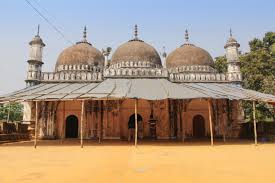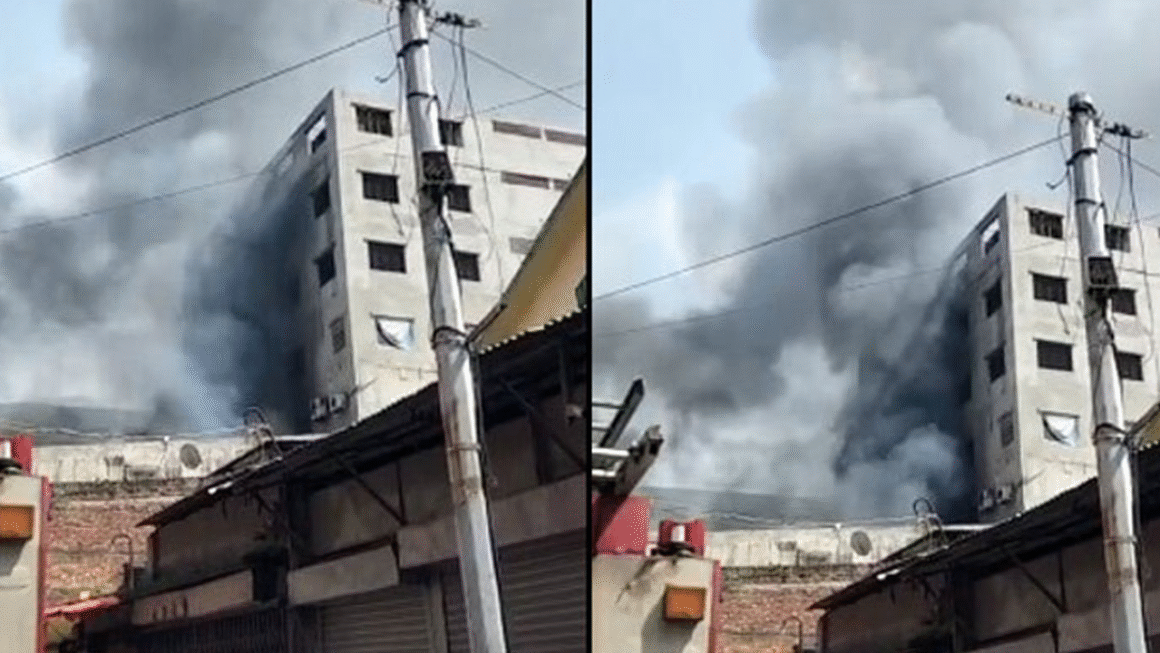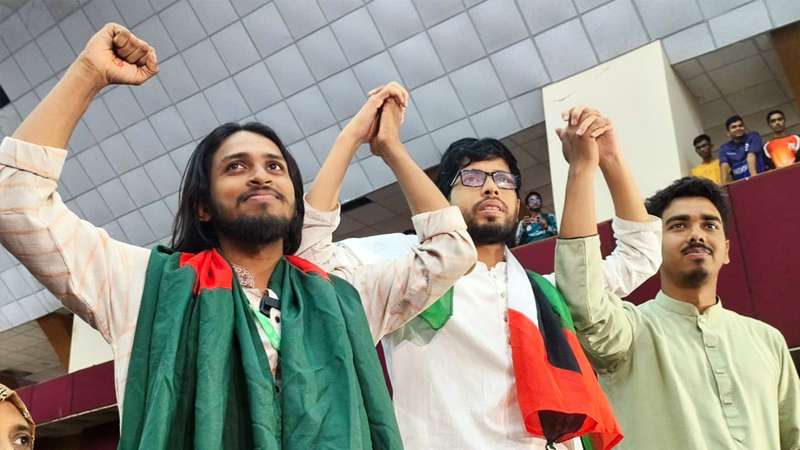Jhaudiyar Sahi Masjid is one of Kushtia’s lesser-known yet historically significant religious sites. Nestled in the peaceful village of Jhaudiyar, this ancient mosque has quietly stood the test of time, bearing witness to generations of worshippers and cultural transformations. With its classical Mughal-inspired architecture and local craftsmanship, the mosque offers a profound glimpse into Bangladesh’s rich Islamic heritage.
Though not as widely documented as some of the country’s more prominent landmarks, Jhaudiyar Sahi Masjid holds immense architectural, spiritual, and cultural value. This blog will explore its history, design, religious significance, and offer practical advice for anyone seeking to visit this hidden gem.
Historical Background of Jhaudiyar Sahi Masjid-
The exact date of construction of Jhaudiyar Sahi Masjid remains unverified due to the lack of official documentation. However, local historians and architectural experts believe the mosque was built during the late Mughal era, possibly in the 18th or early 19th century. It is thought to have been commissioned by a local Sufi or influential noble family, as the word “Sahi” (derived from “Shahi”) suggests royal or elite patronage.
Over the centuries, Jhaudiyar Sahi Masjid has served not only as a place of worship but also as a center for Islamic teaching, community gathering, and spiritual reflection. It has seen renovations and minor restorations but still retains its original character, making it an important relic of pre-modern Islamic architecture in rural Bangladesh.
Location and Accessibility-
Jhaudiyar Sahi Masjid is located in Jhaudiyar village, under Kumarkhali Upazila in Kushtia District, Bangladesh. Though the mosque lies away from the bustling city centers, its serene location adds to its charm and spiritual ambiance.
Visitors can reach the mosque via:
- Road transport: Buses and CNG-run auto-rickshaws from Kushtia town.
- Private vehicles: Ideal for those seeking a flexible schedule.
- Guided heritage tours: Sometimes offered during Islamic festivals or cultural weeks.
Nearby, visitors can also explore other heritage sites in Kumarkhali and enjoy the natural scenery of the Gorai River.
Architectural Features-
Jhaudiyar Sahi Masjid is a beautiful example of Islamic and Mughal-inspired architecture localized with rural Bengali elements. Though modest in size compared to imperial mosques, its symmetry and detailed design make it stand out.
Key architectural elements include:
- Triple-domed roof: A signature Mughal mosque feature.
- Mihrab (prayer niche): Finely ornamented and directed towards the Qibla.
- Arched entrances and windows: Reflecting Persian and Mughal styles.
- Minarets at the corners: Though small, they add aesthetic value.
- Brick and lime-mortar construction: Common in 18th-century rural mosques.
- Calligraphy and floral motifs: Subtle, yet visible on interior walls.
The mosque’s proportions, ventilation systems, and layout reflect an intelligent blend of functionality and sacred design.
Religious and Cultural Significance-
More than just a physical structure, Jhaudiyar Sahi Masjid is a spiritual and cultural institution. It plays a vital role in:
- Daily prayers and Friday congregations
- Eid gatherings and Islamic festivities
- Teaching of the Quran and Hadith
- Local community decision-making and religious discussions
Generations of worshippers have found solace and spiritual growth here. Elders in the village recount tales of renowned imams and visiting Sufi saints who once graced the mosque. During Ramadan and Eid, the mosque becomes a hub of activity, filled with prayers, recitations, and communal Iftars.
Conservation Status-
While the mosque is still in active use, Jhaudiyar Sahi Masjid requires more focused conservation efforts to preserve its original charm. Currently, the community manages its upkeep through donations and volunteer work. However, concerns remain regarding:
- Structural wear due to age and weather.
- Lack of formal heritage recognition from national authorities.
- Possible damage from unregulated renovations.
Many locals and historians advocate for government involvement or NGO assistance to help preserve this valuable piece of Bangladesh’s Islamic history.
Why You Should Visit Jhaudiyar Sahi Masjid-
Jhaudiyar Sahi Masjid offers a unique combination of spiritual tranquility, historical value, and architectural beauty. Here’s why it deserves a spot on your travel list:
- Off-the-beaten-path charm: Escape the crowd and experience authentic rural Bangladesh.
- Heritage appreciation: Witness centuries-old mosque architecture.
- Cultural immersion: Interact with the local community and their traditions.
- Peaceful surroundings: Ideal for reflection, photography, and relaxation.
- Proximity to other heritage sites: Combine with a visit to Kumarkhali Bazar, Rabindranath Tagore’s Kuthibari, or Lalon Shah’s shrine.
Best Time to Visit-
The best time to visit Jhaudiyar Sahi Masjid is during the winter season (November to February). The weather is cool and pleasant, making it easier to explore rural areas. Additionally, visiting during:
- Eid-ul-Fitr or Eid-ul-Adha
- Ramadan (especially the last 10 nights)
- Milad-un-Nabi celebrations
…offers a deeper spiritual and cultural experience, as the mosque comes alive with decorations, prayers, and community events.
Avoid the monsoon season, as rural roads may become muddy and less accessible.
Conclusion-
Jhaudiyar Sahi Masjid is more than an old mosque—it is a living relic of Bangladesh’s Islamic and cultural legacy. As travelers increasingly seek authentic and meaningful experiences, places like this offer a chance to step back in time, reflect in peace, and appreciate the architectural beauty rooted in faith and community.
By visiting and supporting local preservation efforts, travelers not only enrich their understanding of Bangladesh’s spiritual past but also contribute to keeping such sacred spaces alive for future generations. Whether you’re a history buff, a spiritual seeker, or a curious explorer, Jhaudiyar Sahi Masjid offers a unique and deeply rewarding experience.
FAQs About Jhaudiyar Sahi Masjid-
Q1: Where is Jhaudiyar Sahi Masjid located?
A1: It is located in Jhaudiyar village, Kumarkhali Upazila, Kushtia District, Bangladesh.
Q2: What is the historical significance of Jhaudiyar Sahi Masjid?
A2: The mosque is believed to have been built in the late Mughal era and served as a spiritual and community center for centuries.
Q3: What architectural style does the mosque represent?
A3: It features Mughal-inspired Islamic architecture with elements like domes, arches, and decorative mihrabs.
Q4: Is the mosque still in use?
A4: Yes, it is an active mosque and is used for daily prayers, Friday congregations, and religious festivals.
Q5: Are non-Muslims allowed to visit?
A5: While it’s a religious site, respectful visitors are generally welcome. Dress modestly and ask locals for guidance.
Q6: How can I reach Jhaudiyar Sahi Masjid?
A6: From Kushtia town, local transport like auto-rickshaws or private vehicles can take you to the village of Jhaudiyar.
Q7: Is there any entrance fee to visit the mosque?
A7: No, the mosque is free to enter, but donations for maintenance are appreciated.
Q8: What is the best time to visit the mosque?
A8: Winter (November to February) is the best time due to pleasant weather. Islamic festivals also offer a culturally rich experience.
Q9: Are there any nearby places to visit?
A9: Yes, you can visit Kumarkhali Bazar, Shilaidah Kuthibari, and Lalon Shah’s Mazar nearby.
Q10: Has the mosque undergone any renovations?
A10: Yes, minor renovations have been done by the local community, but the core structure remains original.
Would you like a Bangla version of this blog or a photo-based gallery section to add to it?













